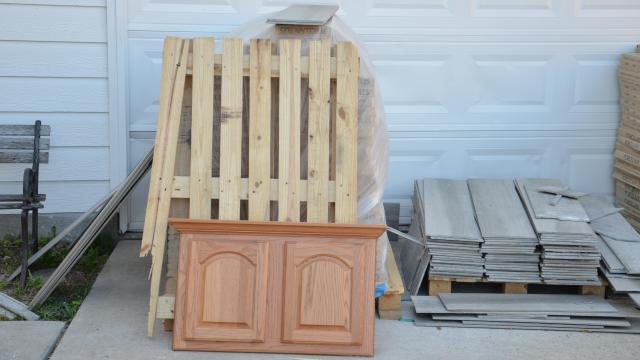Whether you’ve completed a major renovation of your home, or a smaller weekend project, chances are you have some leftover building materials. You may also have perfectly good tools or equipment that have served their purpose, and you know you won’t need (or use) again.
Oh, and those dated cabinets in almost-perfect condition you tore out and replaced with something more modern? They may be trash to you, but to someone else, they’re architectural salvage or valuable vintage.
Of course, not everything left after a home remodeling project can be reused, but a lot of it can be, and doesn’t need to take up space in a landfill. Plus, it’s not necessarily all stuff that your city or waste removal company would accept — especially larger pieces, or items that contain hazardous chemicals.
Generally speaking, a lot will depend on where you live, what you’re getting rid of, and how much time and effort you’re willing to put in. With that in mind, here are a few ways to properly dispose of your leftover home construction materials.
What to do with leftover building material
These may not be as easy as dumping everything in a pile on the curb, but they get the job done without breaking the law, and possibly, helping other people.
Household hazardous waste disposal
Before getting to the other options, let’s address the items that you can’t throw away or give away — stuff like containers of paint or solvents that have been opened, electronics, and anything containing lead paint or asbestos (which, ideally, you wouldn’t be handling yourself, but that’s a different story).
To dispose of these properly, you’ll need to look up your city or county’s sanitation department to find out which materials are considered hazardous, and where members of the public can bring hazardous household waste. There might be a dedicated facility that’s open year-round, or specific dates throughout the year where you can drop the items off at a designated location.
The same is true of larger, bulk materials — your local sanitation department will have information on how and where to dispose of those.
Donate the materials to a nonprofit
Every nonprofit organisation that operates a thrift or resale shop has its own rules — including which items are accepted as donations — so always check before dumping your stuff outside a storefront and hitting the road.
But it’s important to keep in mind that each location operates as an independent entity and sets its own rules, so always check the specific location’s website or call ahead to find out what they take.
Post it online
Between Facebook Marketplace, Nextdoor, and Craigslist, there are plenty of ways to let your neighbours know that you have something that’s potentially of value to them, but no longer need yourself. It’s up to you to decide whether to give it away for free (in which case, there are also your local buy-nothing groups) or sell it.

Leave a Reply
You must be logged in to post a comment.